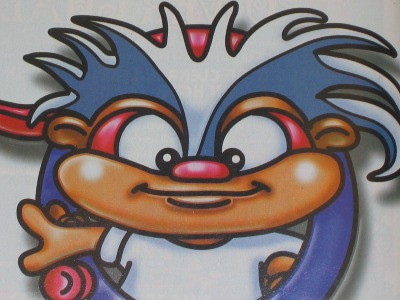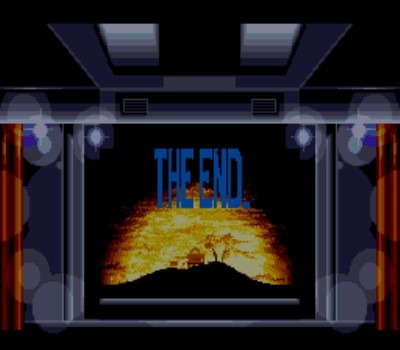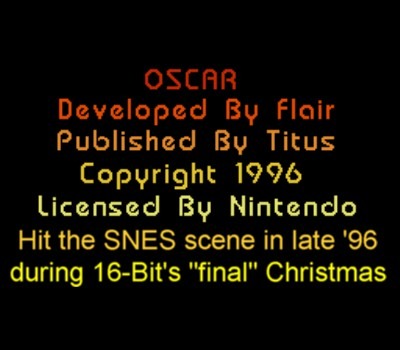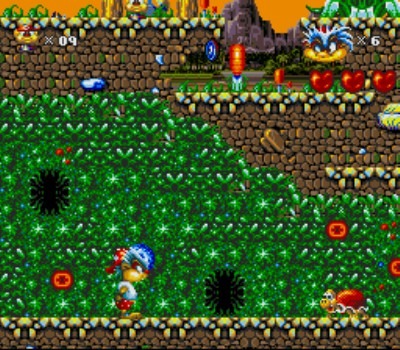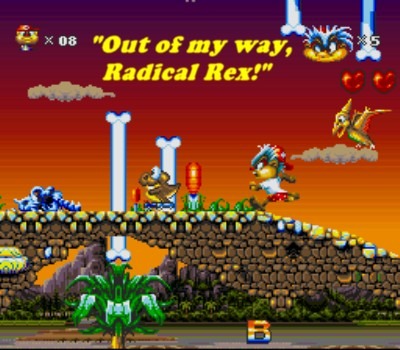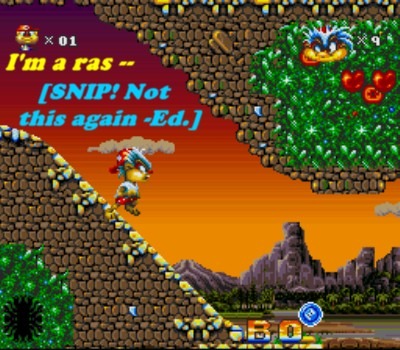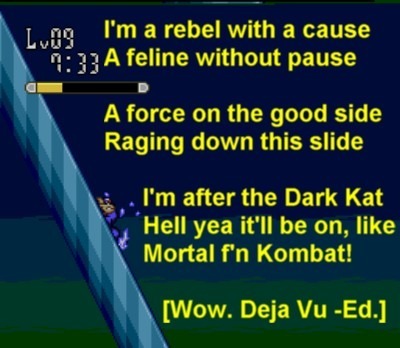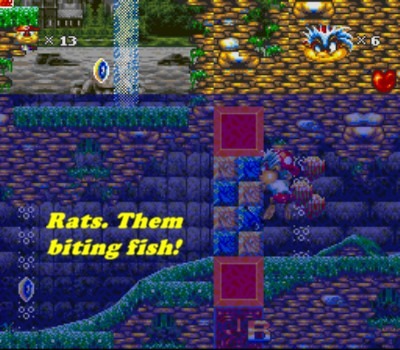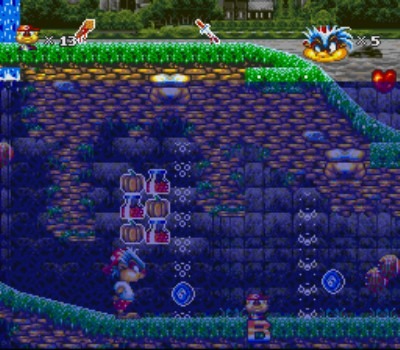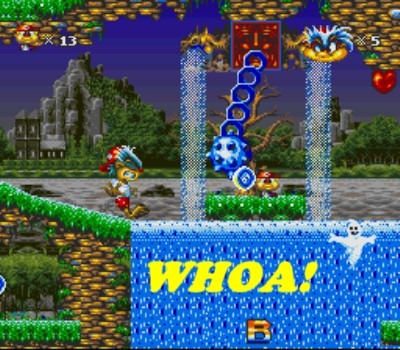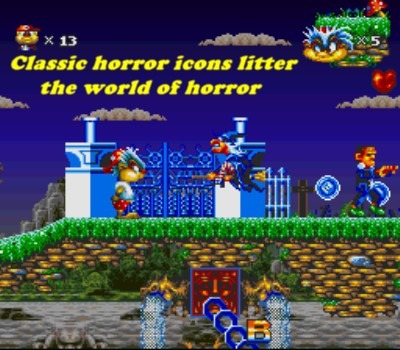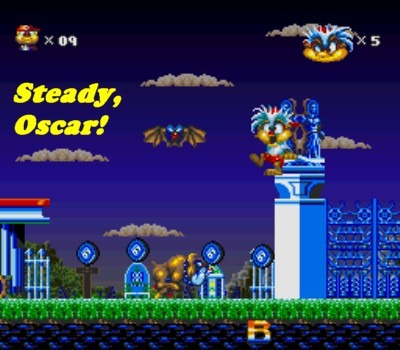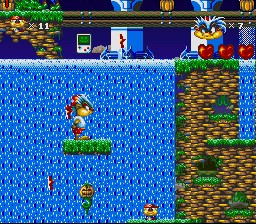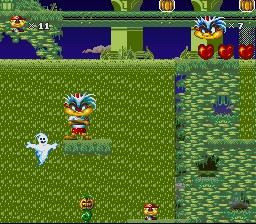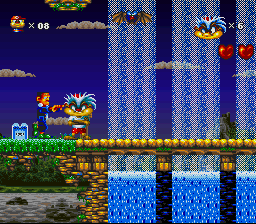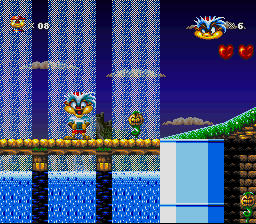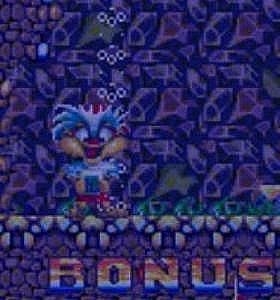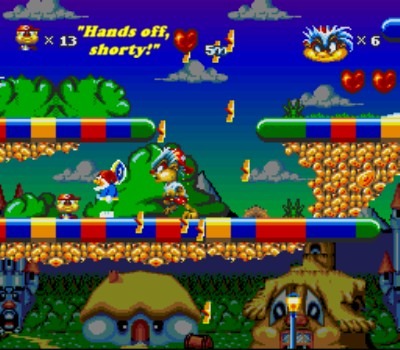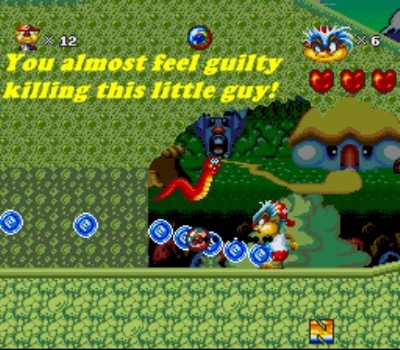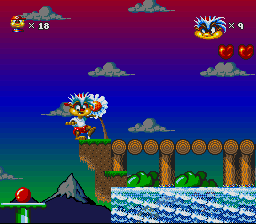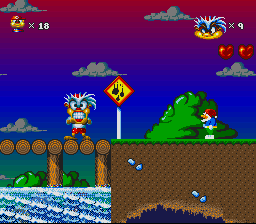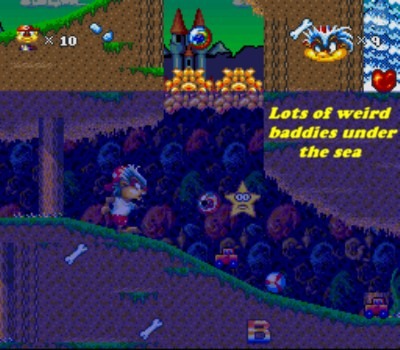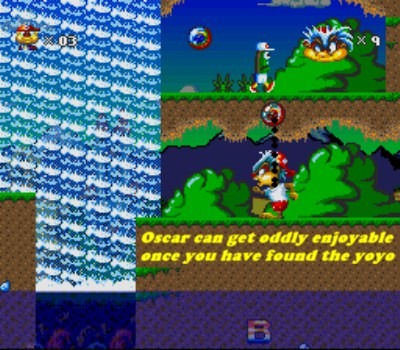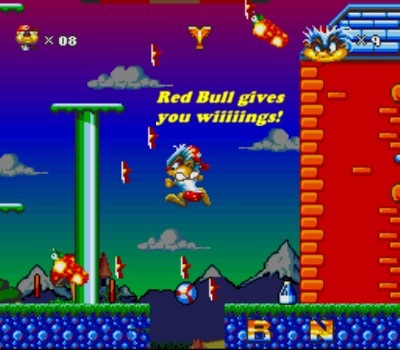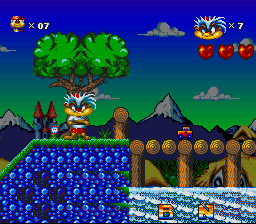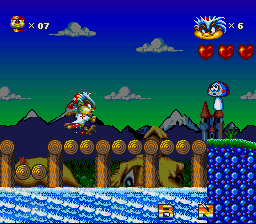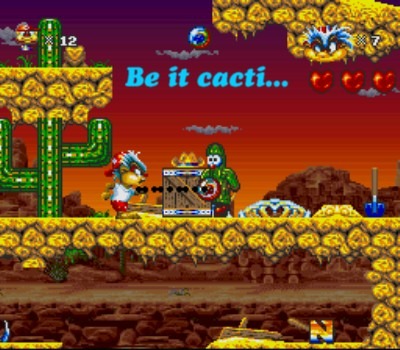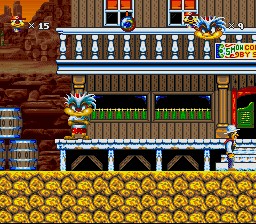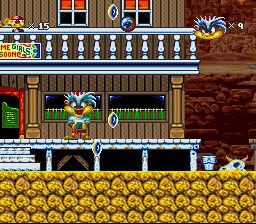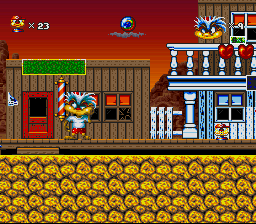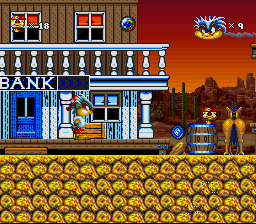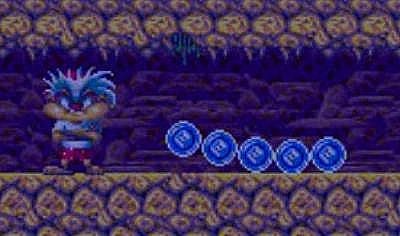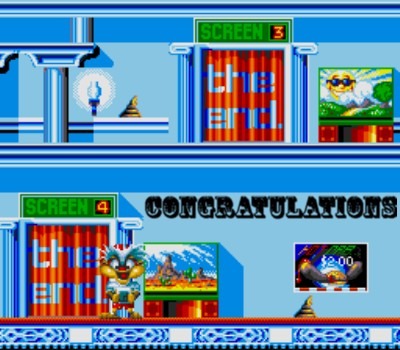
This Sunday, February 26, 2017, marks the 88th Oscars. Yup, the Oscars have been around since 1929. With that in mind, there’s no better time than now to look at a rather obscure Super Nintendo platformer by the name of… Oscar. It’s a game you might not have heard of before or even knew that it ever came out on the SNES. Released during the “final winter” of the system’s life in North America, Oscar arrived with zero fanfare. If you stuck it out with your SNES in 1996 and walked into a game store that December, you definitely weren’t buying Oscar over Donkey Kong Country 3. So it’s no surprise that Oscar was left to reside in obscure pastures. Here at RVGFanatic I pride myself in reviewing not only the masterpieces of the SNES library but the lesser known games as well. Sometimes you never know when you might hit upon a gem. Oscar most definitely isn’t, but that doesn’t mean it’s devoid of any merit. Let’s take a closer look…
THE FINAL FOUR THREE
January 17, 2006. On that fateful day I became a “born again” SNES fan. Having burned out on the Sega Saturn, and shockingly listless toward gaming in general, there was but one flame left flickering in the darkness: Nintendo’s 16-bit wonder. All my childhood favorites. All the classic games I missed out on. And all the funky little games I’d always been curious about but never got to play. Six months later I amassed all the SNES games I ever wanted — 397 to be precise. There were now only three more games remaining on my want list: Harvest Moon, Mr. Do! and Oscar.

As fate would have it, a reputable member at a gaming forum I frequented was going through a quarter-life crisis. He decided to sell his entire game collection. He listed Oscar on eBay with a starting price of 99 cents — the first copy I had ever seen for sell. I didn’t want to chance it, knowing the other board members would be interested and watching it, so I reached out to him and offered to take it off his hands for $12. He agreed, and the rest is history. Thanks Chris. I hope you and your wife are doing well ![]()
But I’m getting ahead of myself. Let’s rewind to a cold night in December of 1996 when Oscar first caught my eye…
WINTER 1996

My brother was subscribed to EGM in ’96. I will always consider 1994 as the very peak of EGM, but 1996 wasn’t bad in its own right. Of course by ’96 my brother was heavily into the PlayStation and N64. I was too, but to a lesser degree. And unlike my brother, I still cared about my old 16-bit friend, the Super Nintendo, which provided me with so many rich gaming memories over the years. The SNES coverage in EGM was minuscule by ’96 to say the least. And by late ’96? Nearly non-existent. Wasn’t EGM’s fault, of course. After all, you can’t really cover what ISN’T there. And you can’t blame the game companies for jumping ship to a 32-bit market that had become much more viable. It’s Darwin’s theory…
Still, I scoured the back pages of each EGM issue that year in the hopes of catching a glimpse of my dear old friend. To see how he’s enduring in his final days. A bit morbid, yes, and quite possibly a bit lame, but hey, I was 13 and clinging onto an old friend I wasn’t ready to quite yet let go.
But in that glorious December holiday issue of ’96, I needn’t look to the back pages. For right in the middle of the magazine boasted a mouth-watering 16-bit special for those few remaining super loyal 16-bit fans.
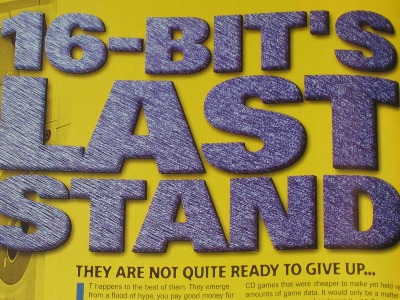
I’ll never forget this amazing piece. It was one of EGM’s best that year; the article even had a retro feel in the way that they used the colors and fonts. It was fitting. With this article EGM made my beloved old friend’s rite of passage into the afterlife a little easier to bear. It was my friend’s final “big” winter.
And as I sat there reading the article by a crackling fire (or not), a handful of games caught my eye. These games made me think, “I know this game probably won’t be great or anything but damn if they don’t look kind of fun and interesting!” … in a very non groundbreaking 1993 sort of way, mind you. But sometimes, that nostalgic simplicity is exactly what you crave, especially in a generation where games were becoming increasingly more complex.
And of course, Oscar was one of them [I didn’t see that one coming -Ed.]

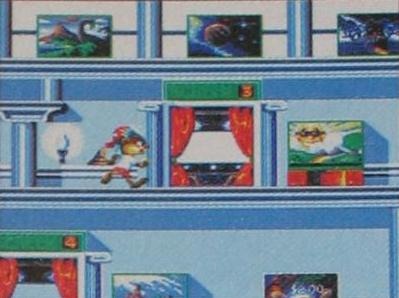
What a blast from the past, I thought, staring at the little Oscar screenshots. It looked exactly like one of the hundreds of “me too” mascot platformers that saturated the SNES back in 1993. It was a comforting sight, and there was something about Oscar that spoke to my gaming soul that cold December night of 1996. Running from movie to movie just like my friends and I used to, I was intrigued by the idea of visiting different themed sets. It gave off the vibe that Oscar could be a fun little diverse platformer. I also remember vividly thinking that hat Oscar was wearing was one of those “pajama hats.” Like Scrooge McDuck from Mickey’s Christmas Carol. So I deducted then and there that Oscar was not only an aspiring thespian, but that he was also an insomniac. Wow, I was weird… [Was? Eh? *poke* -Ed.]
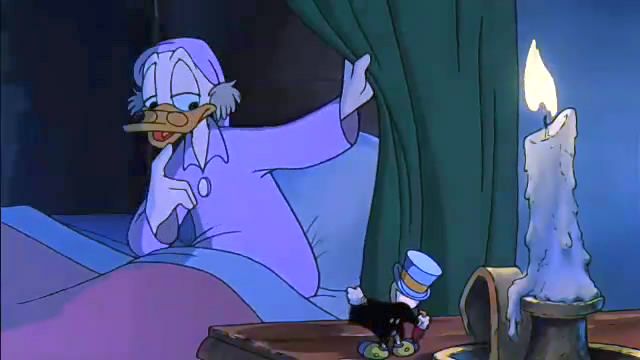

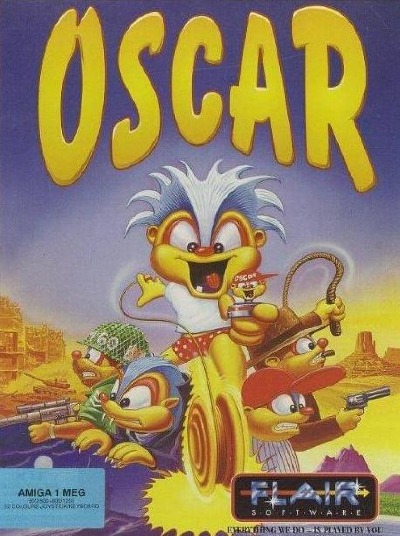
Oscar began its life on the Amiga and MS-DOS in 1993. It was rather obscure, and certainly not a gem in the least, so you wonder why, from a financial point of view, Flair decided to port it over to the SNES in late ’96. I once read a rumor, just a rumor mind you, that Rampage: World Tour on the Sega Saturn only sold a lousy 600 copies. Always made me wonder how many copies SNES Oscar sold.

Nevertheless, Oscar left its imprint on me that winter evening of ’96, but I knew I probably would never play it. Nearly 10 years later, thanks to an old internet buddy leaving the retro gaming scene, I finally got my hands on Oscar. Surely a happy ending, right? Well…
NOT GONNA WIN ANY OSCARS…
Some SNES pundits and connoisseurs may be screaming right now, “1996 was not 16-bit’s final Christmas!” Hey, take it easy. Of course, a trickle (and I do mean a trickle) of games came out for the SNES in North America throughout ’97 and even as late as ’98, but ’96 undoubtedly marked the last “great” (and I use that term loosely) push for our beloved 16-bit systems.
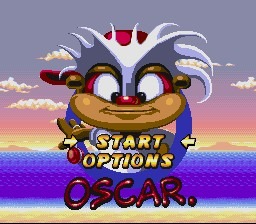
Movie fiend Oscar finds himself at the local multiplex with four showings. Instead of watching from the comfort of his seat, the little guy jumps into the silver screen one by one to become the shining star of each movie! Each film has three scenes (i.e. stages) to conquer and you may select the films in any order you wish. Not only are the sets hazardous, but Oscar must perform his own stunts and there are no retakes. Can you survive the movie marathon madness?
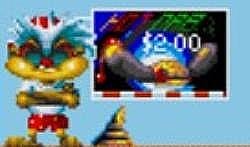
Kids these days. Obviously somebody missed the “no dumping” sign in the lobby.
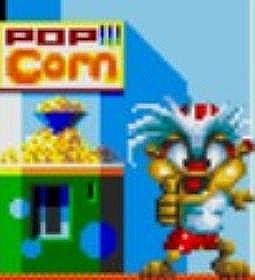
Let’s all go to the lobby
To get ourselves a treat.
Delicious things to eat.
The popcorn can’t be beat.
The sparkling drinks are just dandy.
The chocolate bars and nut candy.
So let’s all go to the lobby
To get ourselves a treat.
[I’ll be back in 5… -Ed.]
Even though the fat and cholesterol will clog your arteries, Oscar reminds us nothing completes the full movie experience like a jumbo bag of heart stopping extra buttery popcorn. Yum.
MOVIE SET #1
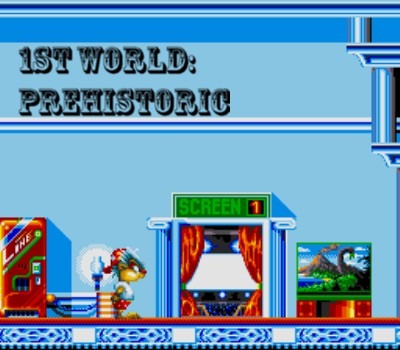
Right off the bat you can see that the visuals are poor even by 1993 standards (and mind you, it came out in October of 1996). Of course, visuals aren’t the end all be all, but just be aware this ain’t exactly eye candy we’re talking about here.
Initially, your only form of offense is the classic hop and bop. Control is a bit slippery and it suffers from a herky jerky camera that whips a bit too much when changing directions, but it’s not something you can’t overcome with a bit of practice. That little blue disc up top is a film canister. They contain points, power ups (even power downs but more on that later) and such.
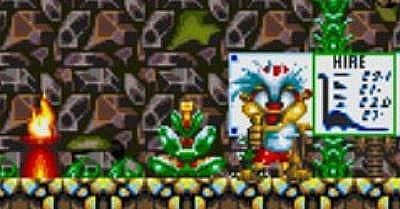
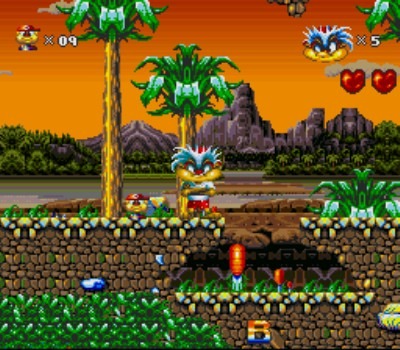
The goal is to locate all the oscars scattered throughout each level. Some are out in plain sight while others, as you probably guessed, are a bit trickier to find.
Oscar will say “THANKS EVERYBODY!” each time you grab one. It’s an endearing sound effect that reminds me of Dr. Nick from The Simpsons — “HI EVERYBODY!”
But don’t take my word for it. Listen for yourself!
Pretty uncanny if I do say so myself!
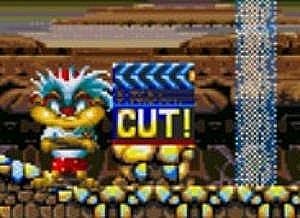
Once all the oscars have been collected, locate the clapperboard to exit the level. Upon doing so, you’ll hear a strange and somewhat creepy voice scream, “AND CUT!” It’s always a little jarring, even when you know it’s coming…
![[Speak for yourself! -Oscar]](http://rvgfanatic.com/wordpress/wp-content/uploads/2017/02/Oscar14.jpg)
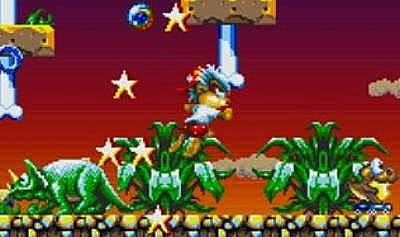
Each stage houses a yoyo that’s hidden inside one of the film canisters. Finding it will make your life much easier as you no longer have to rely on the hop and bop to dispose of an enemy. But can you find the yoyo in each stage? Some are rather tricky…
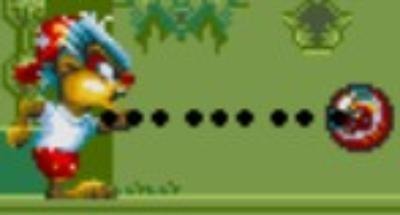
The yoyo completely changes the dynamic of the game. Suddenly Oscar becomes an offensive force of nature. I kind of like how the first part of a level is approached with a more defensive mindset. But should you locate the yoyo, things suddenly switch to a more offensive plan of attack. It’s actually a bit refreshing because most platformers don’t offer such a 180 mid-level like this game does. Sure, you can always kill enemies by jumping on their heads, but due to the loose control and speed of the game this isn’t always recommended.
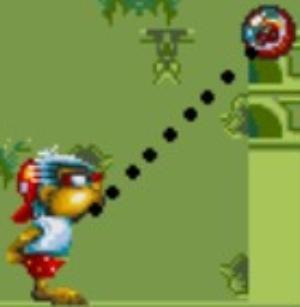
This comes in handy as you can knock off unsuspecting foes from different tiers! Talk about efficient and effective.

Last but not least, it can be flung upwards. As you can imagine, the yoyo makes this a much easier game. You can still complete the levels without the yoyo, but the floaty jumps and fast-moving baddies are difficult to time properly. The trick is finding the yoyo in each stage. Once found it’s yours to keep for that level. You start from scratch on each new stage. Sometimes the yoyo is hidden near the beginning. Other times you’ll have to claw and dig to find the damn thing. It’s just a shame that the yoyo does not operate as a grappler. A little Bionic Commando action would have really made this memorable, but alas it wasn’t meant to be.
Oscar has two components. The first, where you begin each stage without the yoyo, you’re erring more on the defensive side. But once you’ve found the yoyo, the second part of the game kicks in where suddenly you’re more aggressive. With the levels designed the way they are, I find this dynamic works pretty well.
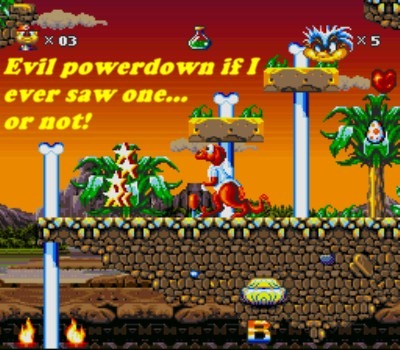
In addition to the various power ups, there are also power downs or icons that can really hamper your chances for success. For instance, one icon when touched turns you invisible for a good 20 or 25 seconds. Invisible, but not invincible. This is super annoying as you’re likely to eat some damage if you try to move around during this time. Not very fun!
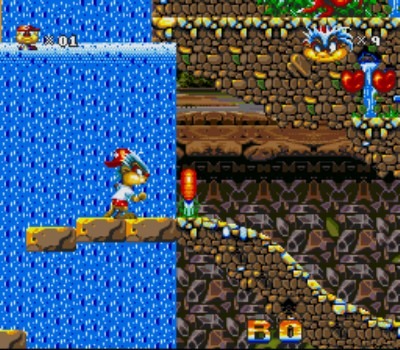
He’s a quick little bugger who picks up a lot of speed in no time flat. But you only have three hearts to work with, so avoid running unless you absolutely need to.
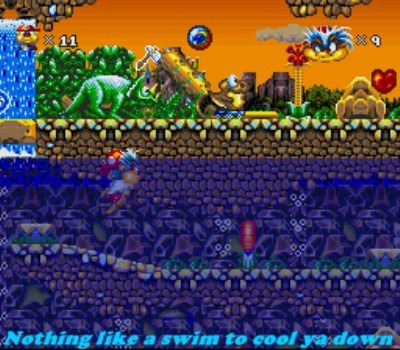
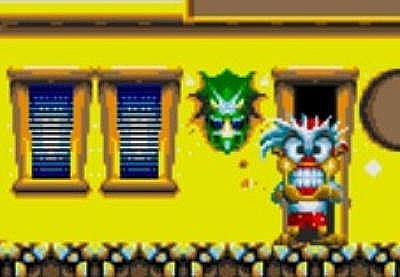
Oscar, a diehard fan of Jim Henson’s old family show “DINOSAURS” on TGIF, pays homage to Sherman Helmsley’s former character.
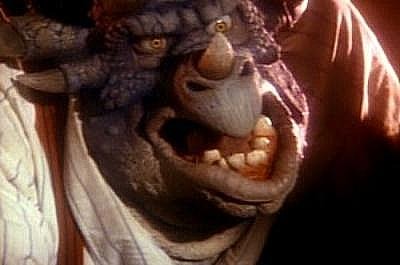
MOVIE SET #2
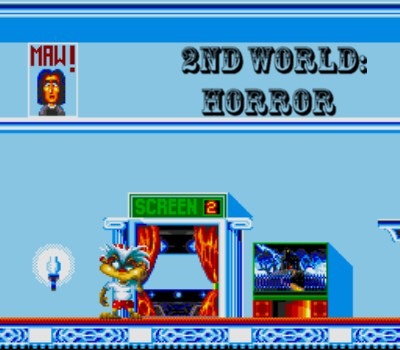
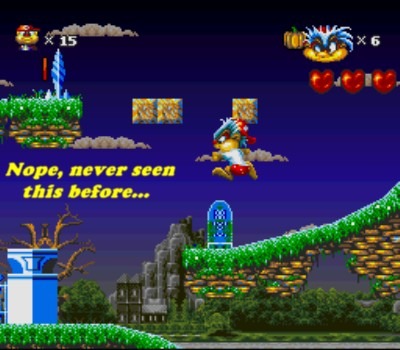
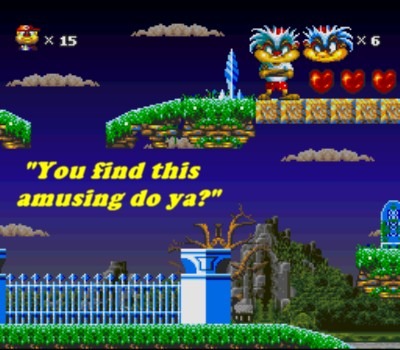
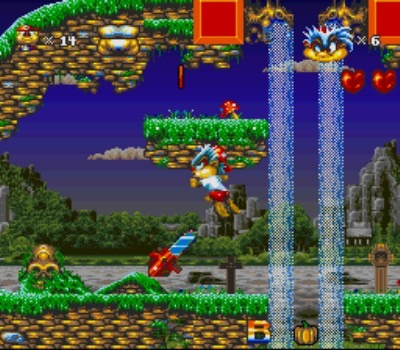
Flair Software failed to snag the rights to Leatherface, so they had to settle for just the chainsaw instead. Yes, true story.
Oscar might be a rodent but the dude is practically an amphibian. Unfortunately he finds himself cornered here. How do you pass the blocks?
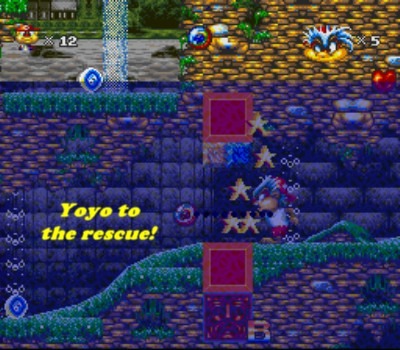
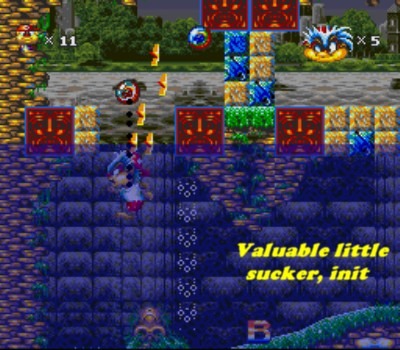
Plenty of goods to be found underwater. The various icons match the theme and tone of each movie set. It’s a small touch I appreciate even though it doesn’t make a difference in the overall gameplay.
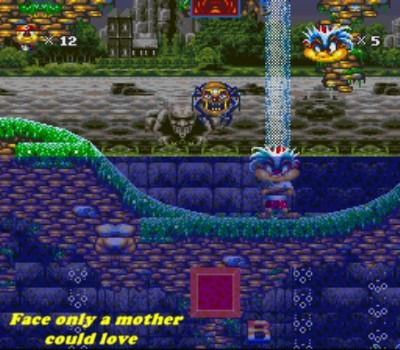
 Behold — the oddest feature from Oscar, or quite frankly perhaps any SNES platformer… the Game Boy icon! Truly bizarre but completely harmless, this imbues your TV screen with strangely familiar shades of pale green! The effect is temporary and good for a few laughs… although Oscar here does not find it particularly amusing one iota! It’s things like this that show off the game’s offbeat sense of humor, and reminds you not to take it so seriously. You kind of have to enter a certain mindset if you are to enjoy Oscar at all…
Behold — the oddest feature from Oscar, or quite frankly perhaps any SNES platformer… the Game Boy icon! Truly bizarre but completely harmless, this imbues your TV screen with strangely familiar shades of pale green! The effect is temporary and good for a few laughs… although Oscar here does not find it particularly amusing one iota! It’s things like this that show off the game’s offbeat sense of humor, and reminds you not to take it so seriously. You kind of have to enter a certain mindset if you are to enjoy Oscar at all…
Endearing and quirky in its own unique way…

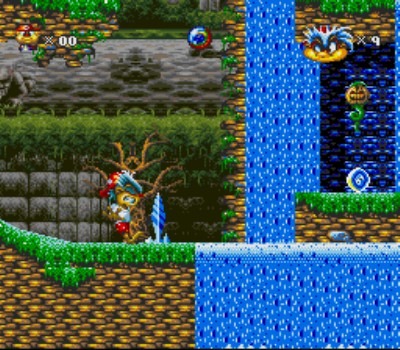
Hmmm, now that I think of it, Oscar might very well be bipolar.
Each stage contains five letters hidden within the film canisters. These five letters spell out BONUS when all collected. If you can secure all five, at level’s end you’ll be transported to a bonus stage. From there collect all the goodies you can within the allotted time.
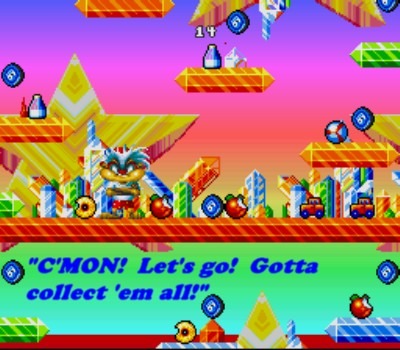
MOVIE SET #3
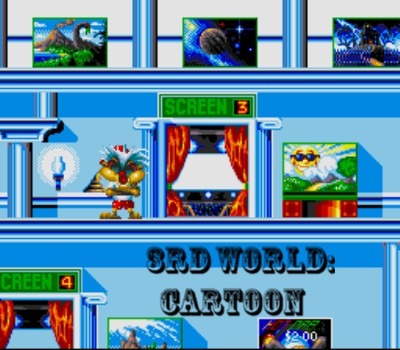
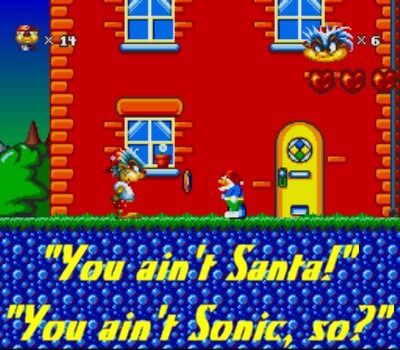
Careful. These gnomes are real nimble suckers. They zip along like they’re skating on ice. As a result it’s real easy to lose a heart to these small bastards.
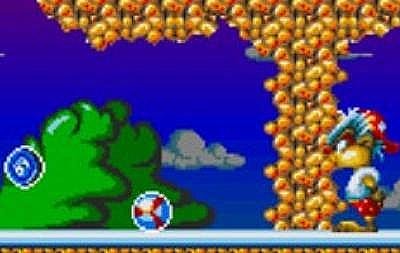
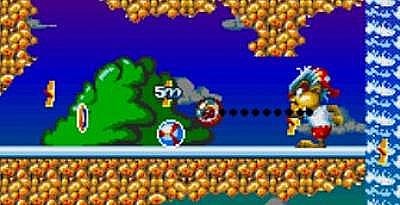
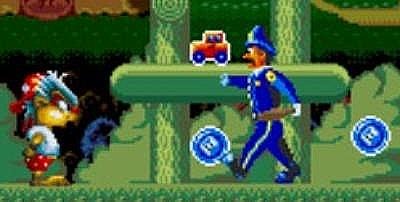
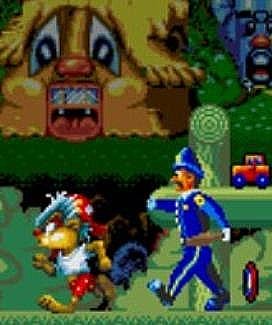
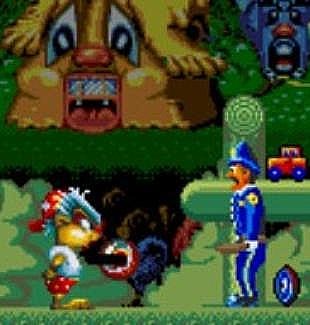
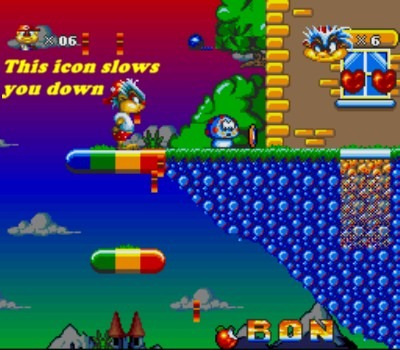
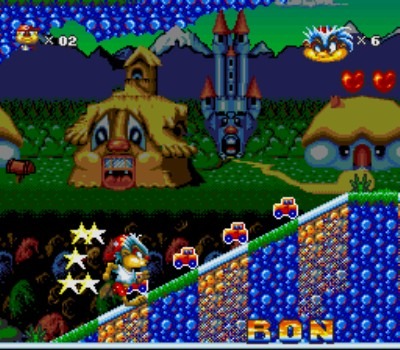
The numerous icons scattered throughout serve as bonus points. More points equals more lives. It’s not uncommon for the screen to explode in an array of yellow stars. By the way, those weird face houses remind me somehow of The Wizard of Oz or Alice in Wonderland.
Warning sign points to falling rocks but oddly, there are none. Huh.
That’s definitely no invincible Mario star power up! Make sure you have the yoyo before entering the murky waters. Though possible, it’s very tough to head-bop enemies here.
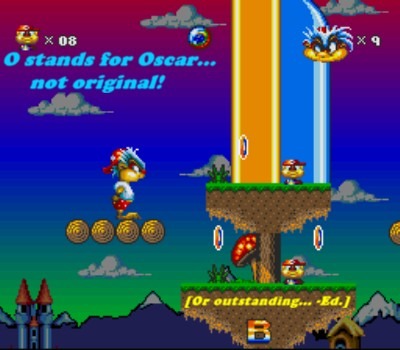
It really does. With the yoyo in tow you become more of a hunter rather than the hunted. Besides, who doesn’t enjoy picking off walking dill pickles from high above?
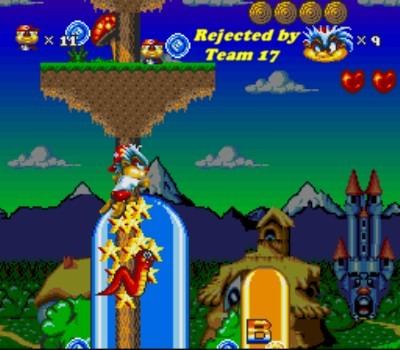
This is temporary, but a good icon to grab. It replaces the yoyo if you’re in possession of said item. Once it wears off, the yoyo returns.
Wings don’t come by often. When you find them it usually means there are oscars hiding in very high places nearby. Better grab them all before the power up wears off…
Platforming rule #487: there must be a falling bridge somewhere.
MOVIE SET #4
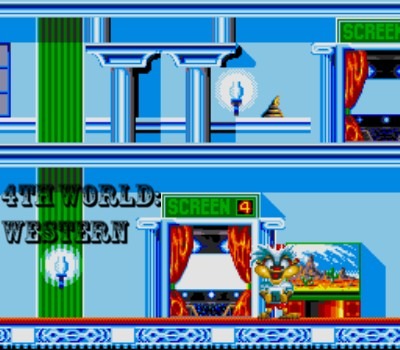
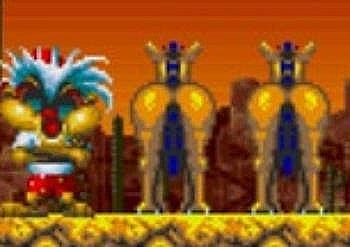
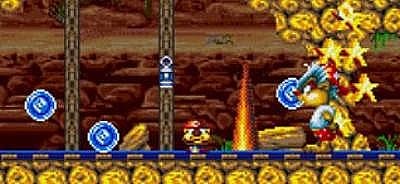
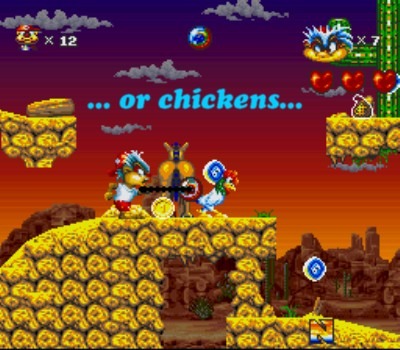
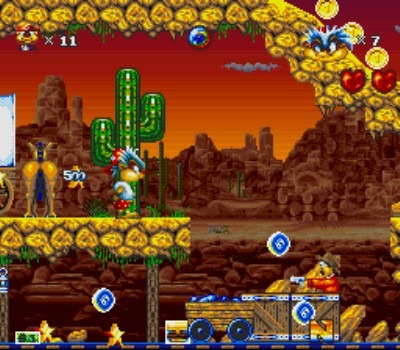
Watch out for these gunslingers who have a tendency to hide in sneaky places and pop up out of nowhere.
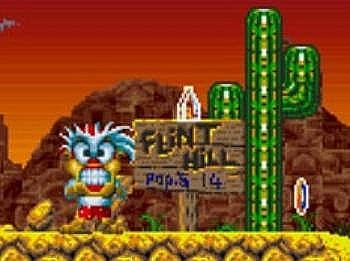
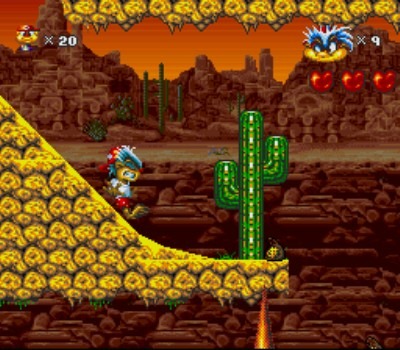
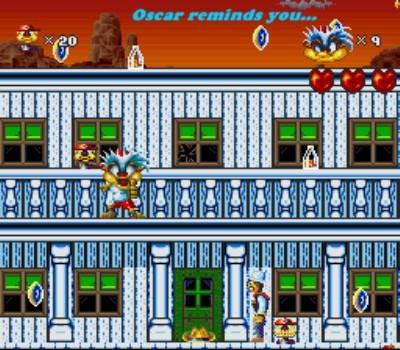
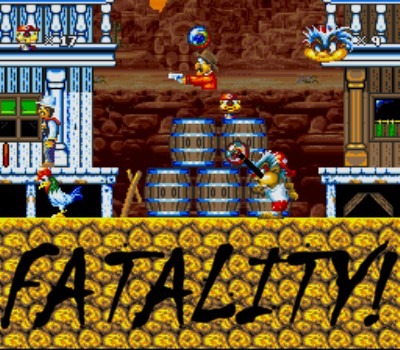
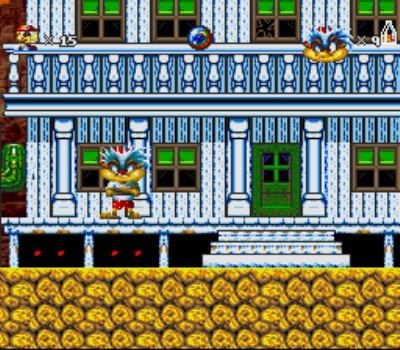

Seriously, Oscar might be gaming’s first bipolar protagonist…

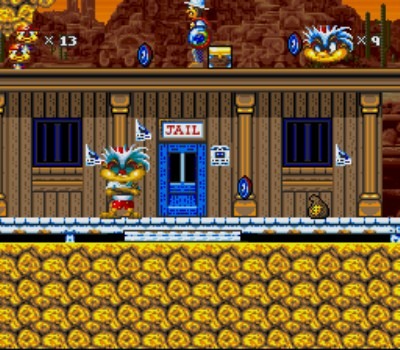
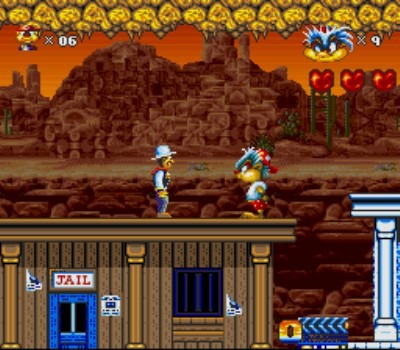
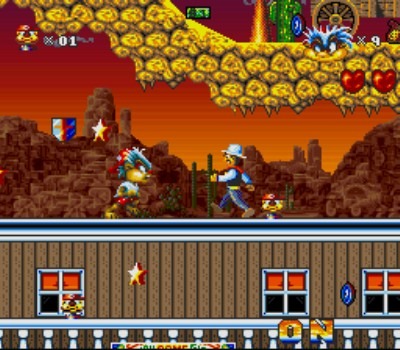
“Hmmm, should I get a haircut at the barber? Or off to the bank first? On second thought, maybe I’ll just stare at some ass.”
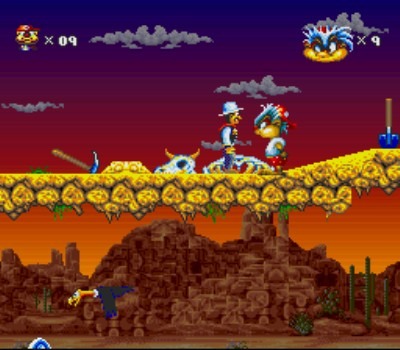
“Well howdy, partna!”
“Quit it!”
“Quit what?”
“Saying that!”
“That?”
“ARGGGH!!!”
In one particular stage in the west, the BONUS letters lay conveniently next to one another. If you’re smart, you’ll take them one at a time.
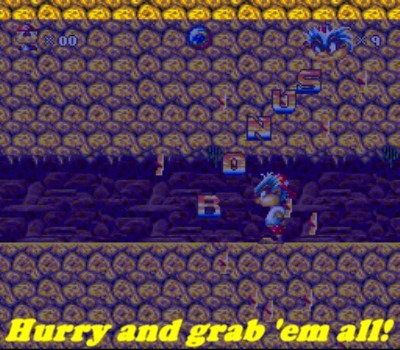
POST CREDITS
After all four movies are completed, that’s 12 stages in all for those counting at home, you’re done! No other worlds to conquer, no final big boss, nada. That’s it, you’re finished. All that’s left is heading over to the exit. It’s all rather a bit anticlimactic.

WHAT THE CRITICS SAID
Er, not much. EGM and GameFan were busy covering the 32-bit titles and didn’t bother to review it. Since Oscar arrived late in the Super Nintendo’s life, it was met with very little fanfare.
CLOSING THOUGHTS
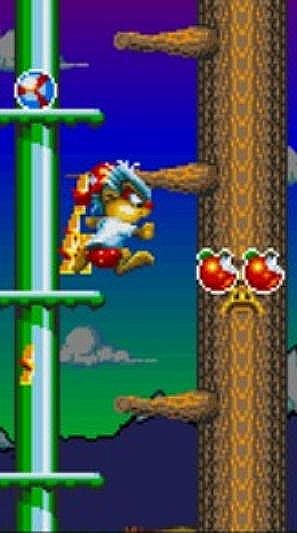
“Oscar.” “Um… Oscar who?”
“Oscar out already, damnit!”
One of the truly awesome things about this hobby is the ability to buy and play the games we missed out on back in the day. Whether the box art had you mesmerized, or that tiny half-page preview in a game magazine grabbed a certain hold of you — there’s always those games you never got to play but had always wanted to. Nearly 10 years after seeing Oscar in the vaunted pages of EGM, I was finally able to quell my curiosity of it. Truth be told, I was extremely let down. In fact, I even hated it upon initial play. A while later, after I adjusted my expectations, I gave the game a second chance. Going through all 12 stages in a little over an hour, I’ll be damned, Oscar grew on me. It isn’t a good game by a long shot. But it can be oddly enjoyable at times, especially after the yoyo is secured. There’s also something slightly endearing about the quirks — from Oscar himself to the level design, the game has a strange appeal in a way I can’t quite put my finger on. Oscar does suffer from loose control and a rather poor camera; at first you may suffer some motion sickness. But press on and you just might find some merit hidden within. I would not recommend it, however, unless you are a diehard SNES fanatic who loves his (or her) platform games as much as I do. There are far superior action games worth your time and exploration but I’ve played plenty worse than Oscar, that’s for damn sure.
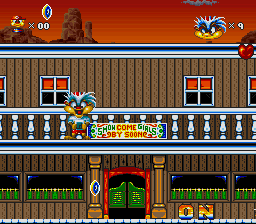
I particularly like how each level begins with a more defensive mindset, as jumping on baddies’ heads may leave you wide open if mistimed. You’ll find yourself desperately opening all the film canisters you can as quickly as you can, hoping to find that magical game changing yoyo. Once you do, it’s game on. In a flash you go from the hunted to the hunter. Maybe it’s just me, but that transformation in each stage is a pretty damn cool feeling.
Graphically it’s a bit disappointing. Although a ’93 game at heart, I expected much better visuals. The levels vary — there are some cool looking bits but some really odd color schemes as well. The baddies are poorly animated and rigid; they sometimes border on being lifeless. Not the kind of visual quality you’d expect from your Super Nintendo. The music is fairly lame, although I did somewhat enjoy the cartoon theme.
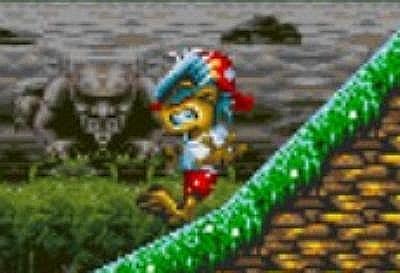
The scrolling is a bit herky jerky to say the least. Oscar is a bit of a touchy fella. If you’ve played Bubsy, then you’ll know what I mean. The levels aren’t huge; you’ll search high and low for the missing oscars. It can feel a bit like playing hide-and-seek. There are no bosses at all, which is a bit lame but in hindsight given the erratic scrolling is probably a good thing. Still, zero bosses whatsoever certainly left me feeling a little bit hollow upon completion.

In the end, I’m glad I gave Oscar a second chance. It’s really not that bad. But it’s not going to make any top games list ever, either. And that’s OK. Not every game can be as epic as Super Mario World. Many simply serve as niche titles — games that you may consider buying and playing once the rest have been taken care of. Oscar has a weird atmosphere that may well grow on you as you work out the kinks. And if nothing else, stuff like the Game Boy gimmick and the Show Girls set piece will put a stupid little smile on your face. The game has some humor and I can appreciate that about it. Oscar is a perfect example of a guilty pleasure.
Graphics: 5
Sound: 4
Gameplay: 4.5
Longevity: 4
Overall: 4.5
